How to take creative risks and get comfortable doing it
Taking risks in your creative endeavors can be as intimidating as it is essential. The path less traveled often leads to the most extraordinary outcomes. Yet, many of us find ourselves hesitating, toes curled over that precipice, wondering if we’ve got what it takes to leap into the unknown.
Fear of failure looms large. But equipped with the right strategies and mindset, you can embrace the uncertainty of creative risk-taking and turn potential setbacks into unimaginable progress.
Getting comfortable with taking creative risks doesn’t happen overnight. It’s about building confidence step by audacious step. Here, we set off to discover how to harness the initial spark within us. Because when we dare to take those leaps in our creative work, magic happens. With an open mind, let’s explore how pushing boundaries can lead to more vibrant creations and a richer experience along your artistic path.
What is creative risk-taking, and why is it important?
Creative risk-taking is the courage to put forward unique ideas and solutions, even when they stray from conventional paths. It’s about venturing into uncharted territory with your work, whether through a non-traditional approach to a project or expressing novel concepts that everyone might not immediately accept.
But why is this so crucial? Creativity thrives on originality and innovation, which inherently involve stepping beyond comfort zones. In both personal and professional realms, taking creative risks drives progress and can lead to significant breakthroughs. When we always play it safe, we limit our potential for discovery; there’s little room left for serendipitous finds or extraordinary success.
Industries evolve rapidly due to those who dare greatly. If we’re willing to challenge norms, we can pave the way for advancements others hadn’t imagined possible.
Engaging in creative risk also allows us to grow by learning from new experiences and even failures. This process enriches our skill sets and boosts self-confidence because each attempt teaches us more about what works—and what doesn’t—fostering resilience.
Basically, without some level of creative risk-taking, growth stagnates. Ideas recycle instead of renewing themselves. Creative risks push boundaries that result in not just different but potentially better outcomes, making them essential ingredients in any recipe for sustained personal development or professional excellence.
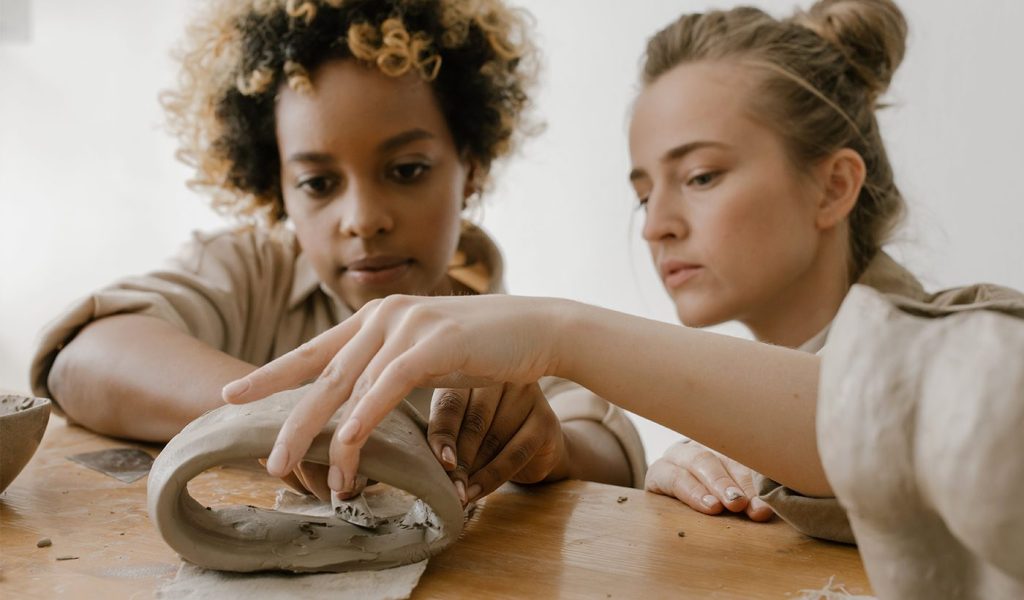
What are the benefits of taking creative risks?
Embracing creativity and taking risks brings many benefits that can transform our personal lives and professional careers. Let’s unpack some of the key advantages.
- Expands comfort zones: Engaging in creative risks broadens your comfort zone. A study by Psychology Today found that people willing to take creative risks were more likely to believe in their creative ability, engage in creative activities, and achieve more creatively.
- Fosters innovation: Risk-taking is the fuel for innovation. When we step out with bold, original ideas, we set the stage for breakthroughs that could redefine an industry or start a new trend.
- Breaks social barriers: Social risk-taking and creativity go hand-in-hand. According to researcher and author Todd Dewett, “To be creative…is to take a risk that your ideas will be critically evaluated.” Research supporting his statement shows social risk-taking is one of the strongest predictors of creative personality and ideation abilities.
- Enhances problem-solving skills: Creative risk encourages us to think differently about challenges, leading to unique solutions others might not have considered. A study by PLOS ONE revealed that creative people are energized by challenging and risky problems, reinforcing the link between creativity and risk-taking.
- Builds resilience: With every creative leap comes the possibility of failure—and invaluable lessons learned in bouncing back stronger than before. Exploring the connection between creativity and risk is crucial in overcoming mental blocks, biases, and fears that might limit creativity.
- Sharpens your competitive edge: In career terms, those known for innovative thinking stand out from peers and may be more likely to land opportunities for advancement or leadership roles.
- Drives personal growth: On a personal level, taking creative risks contributes significantly to self-discovery by revealing hidden strengths and talents you might not have realized you possessed. When you explore creative risks, you develop a newfound sense of adaptability and confidence as a creative.
By stepping into unknown waters with your creativity, you open yourself up to experiences that enrich your work and who you are as an individual—ultimately propelling you forward on multiple fronts.
15 strategies that enable creative risk-taking
As we delve into the heart of creative risk-taking, let’s consider some practical strategies that help promote a culture of innovation and boldness. We’ve designed these actionable strategies to encourage you to embrace risk-taking as an integral part of your creative journey.
1. Understand that creative risk-taking is essential for growth
Recognizing the importance of creative risk-taking is the first crucial step. It’s about acknowledging that you may limit personal and professional growth without it. This understanding helps build a mindset where you’re more open to experimenting and less fearful of potential failure.
Embrace the idea that each risk presents an opportunity for learning and evolving. By internalizing this concept, you’ll find yourself more willing to entertain ideas outside your comfort zone, laying a solid foundation for innovation and progress.
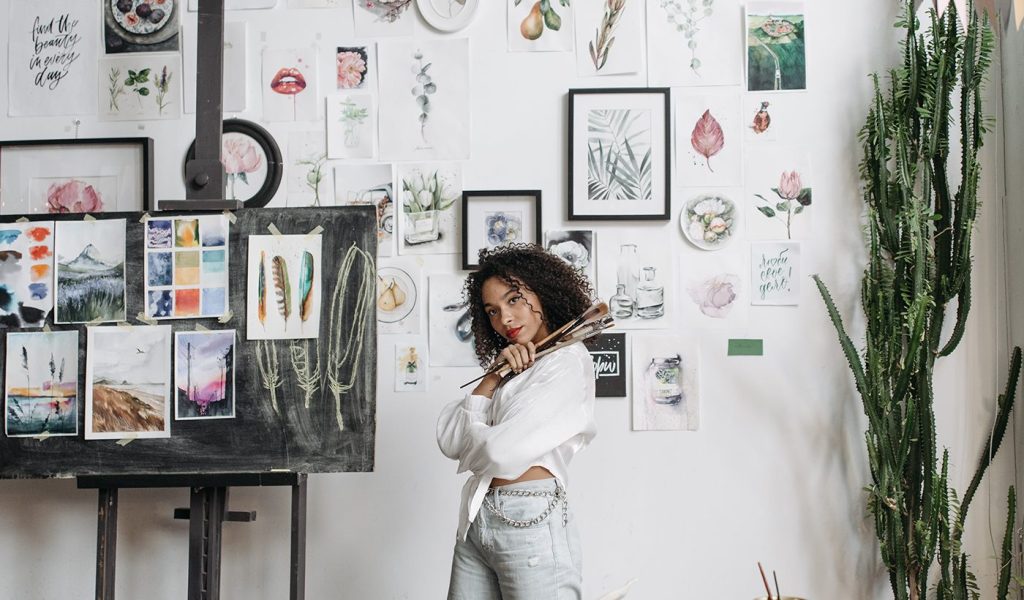
2. Recognize your current creative comfort zone
To grow creatively, first, identify where you’re playing it safe. Take a moment to reflect on your recent projects. Which ones felt easy or routine? Those are likely within your comfort zone. Now, think about what lies just beyond that. What have you avoided due to uncertainty?
Try this exercise: List activities or ideas that make you slightly uncomfortable because they’re new or different. Aim to tackle one of these each week (or each day or month, depending on how grand they are).
This practice gradually stretches your creative boundaries, helping dismantle those invisible walls built by repetition and caution. As TED speaker Dr. Kris Alexander highlights, embrace the idea that “having fun…as you break out of your comfort zone is the ultimate reward one can give.”
3. Identify fears that hinder your creative risk-taking
Understanding the fears that block your creative risks is a powerful strategy. Are you afraid of failure, criticism, or the unknown? Pinpoint these common deterrents by journaling about times when fear held you back.
As you journal, create a fear list with specific worries about your creative endeavors. Next to each fear, write down a counteraction: What’s one thing you can do to face this fear head-on? Mapping out strategies against these anxieties turns abstract fears into manageable obstacles.
4. Shift from a fear-based to a growth-oriented mindset
In her New York Times bestseller Big Magic, author Elizabeth Gilbert says, “Your fear will always be triggered by your creativity because creativity asks you to enter into realms of uncertain outcome, and fear hates uncertain outcome.”
Moving away from fear requires rewiring your thought patterns. Start by recognizing thoughts that stem from fear and deliberately choose to see them as growth opportunities instead.
Try taking a mindfulness approach to rewire these patterns. When you catch yourself hesitating out of fear, pause and ask, “What can I learn or gain from this experience?”
Replace each fearful thought with an affirmative one focused on potential growth outcomes. This conscious shift in perspective gradually builds a more adventurous, creative mindset ready for risk-taking.
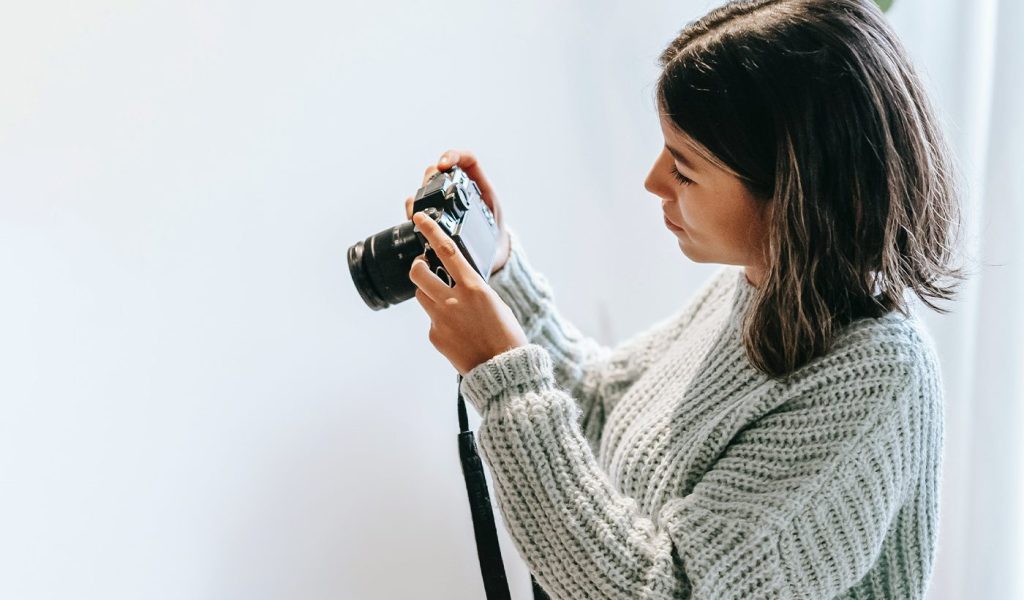
5. Build confidence with low-stakes creative risks
Beginning with minor risks can significantly bolster your confidence. Look for opportunities where the stakes aren’t too high but still push you out of your routine and comfort zone.
Here’s a tip: Commit to a small creative project outside your usual scope. For instance, try writing a short poem or sketching something abstract if you’re more photography-oriented. Or, if creative writing is more of your domain, try exploring the world of visual arts through illustrating, painting, or making photos.
By setting and achieving these mini goals, you’ll see that the fallout from mistakes is often less dire than imagined, encouraging bolder steps in the future.
6. Embrace failure as a learning opportunity
Viewing failure as part of the creative process is transformative. It’s not a setback; it’s rich with lessons that pave the way for growth. Take it from the iconic American writer Dale Carnegie, who said, “Develop success from failures. Discouragement and failure are two of the surest stepping stones to success.”
Each time an effort doesn’t pan out, instead of dwelling on disappointment, make it routine to jot down three things you learned from the experience. This practice shifts focus from defeat to development, reinforcing that every misstep is progress in disguise.
7. Acknowledge your accomplishments
Regularly recognizing your creative wins can significantly enhance self-confidence. It’s about giving yourself credit where it’s due, which fuels further creativity.
Keeping a record of your achievements, like a creative portfolio or a journal, and regularly reviewing it can help reinforce a positive mindset and boost self-esteem.
Whenever you complete a project or receive positive feedback, add it to the list. Reviewing your accomplishments when doubt creeps in is a tangible reminder of your capabilities and successes, providing an instant confidence booster. It’s the perfect way to end nagging imposter syndrome.
8. Set creative goals that involve taking risks
Purposefully setting goals that challenge your creative limits can inspire growth. It’s about aiming for objectives that are a stretch but still attainable.
Here’s how to put it into practice: Define clear, measurable goals with an element of risk. For example, if you’re a writer, commit to submitting an article to a prestigious magazine or writing in a genre outside your comfort zone.
And if you’re a photographer, set out to assemble your work into a published photo book. It doesn’t have to be something you sell, but a project you can commit to that pushes the creative boundaries in your craft.
As you work towards these targets, even partial successes are progress because they require pushing past usual boundaries. By merely getting started, you’ll have built momentum to break through preconceived limitations and comfort zones.
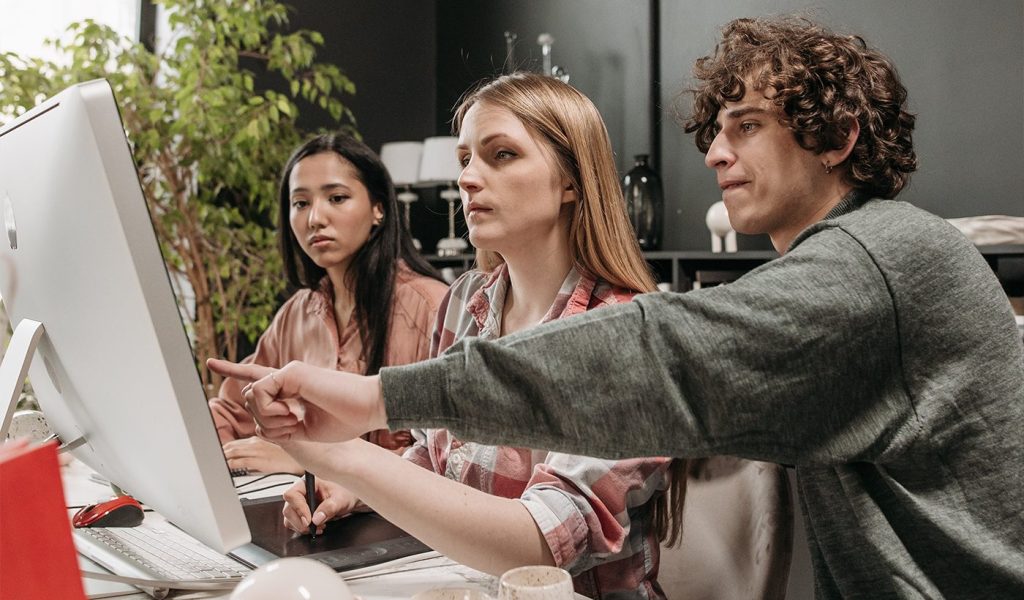
9. Seek feedback and support
Engaging with your community can provide new perspectives and encouragement. Collaboration and input from others are invaluable for growth.
“There is simply no better way to jump-start your creativity than to collaborate,” according to thought leadership strategist Melissa Cohen. “You can join a community, a group, or a project that involves collaboration, feedback, or co-creation. You can also seek mentors, coaches, or peers who can challenge you, support you, or inspire you.”
Try joining a group or finding a mentor in your creative field of interest. Present your ideas and be open to feedback. Also, offer your insights on their projects. This exchange can inspire fresh angles you hadn’t considered and reinforce the collaborative nature of creativity.
10. Try improvisation exercises
Improvisation is all about instinctual response rather than calculated moves. It’s a potent practice for thinking on your feet creatively.
Here’s how: Engage in improvisational activities related to your field. If you’re a writer, try stream-of-consciousness writing. If you’re an artist, draw with continuous lines without lifting the pencil.
Also, infuse flexibility into your routine by designating times for free exploration without specific goals. This scheduled spontaneity creates opportunities for serendipitous discovery and reinforces an atmosphere where taking chances is not just accepted but expected.
These exercises encourage intuitive decision-making rather than relying solely on logic-based planning, which can be powerful in learning to be more creative.
11. Overcome perfectionism with acceptance
Perfection can be an enemy of creativity. Accept that imperfections are inevitable and valuable as part of the creative journey.
If you’re a perfectionist by nature, consider your perfectionism’s impact on your productivity and well-being and recognize the opportunity cost or toll it’s taking. Assess whether striving for perfection in every detail is a productive use of your time and energy.
Here’s a practical exercise worth trying: Set a timer for your creative sessions, and don’t stop to revise or edit your work until it goes off. When the timer expires, stop where you are and share your imperfect work with peers or mentors.
This exercise helps you get comfortable showing works-in-progress and understand that they’re just steps along the way, not final destinations.
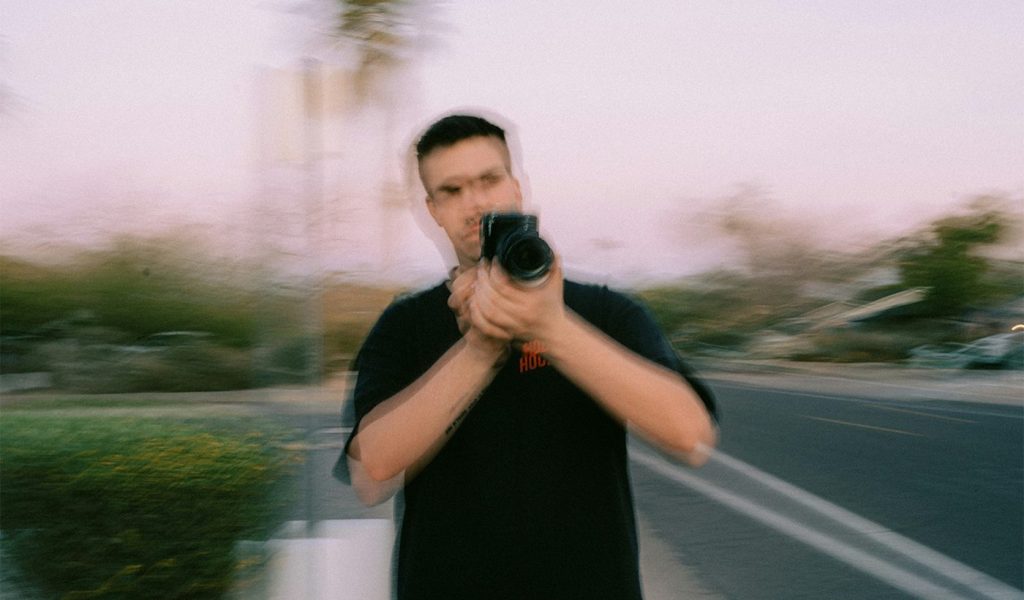
12. Develop comfort with uncertainty
The creative process can be messy, and embracing uncertainty and chaos is necessary to unlock creative potential. It involves being willing to take risks without knowing the outcome and being open to the possibility of growth and transformation.
Uncertainty and ambiguity are essential principles in design and permanent parts of innovation. So, tolerating them is crucial for leveraging them as a source of inspiration and creativity.
Try this exercise: Start a small project without a clear end goal. Let it evolve organically, making decisions based on what feels right in the moment. This practice not only builds comfort with ambiguity but also encourages instinctive creativity.
13. Take bold creative leaps
Diving into the unknown can lead to innovation. But don’t overthink, just leap.
Take inspiration from artist and creative entrepreneur Jenna Rainey, who states you must “push your creative boundaries and challenge your own assumptions.” Experimenting with new ideas, styles, or approaches and venturing beyond the familiar can lead to unique insights and a richer understanding of your capabilities.
Identify one project or idea that feels exciting yet intimidating and commit to it publicly. This could be through social media or a professional network. Making your intentions known adds a layer of accountability that might push you to follow through.
14. Establish a supportive creative environment
Your environment can significantly influence your willingness to take creative risks. Cultivating a space that resonates with encouragement and openness is key.
Assemble a creative board of friends or colleagues who champion bold ideas. Regularly meet to share concepts and provide constructive feedback.
Make your day-to-day environment more conducive to creativity, too. Personalize your physical workspace with items symbolizing courage, like artwork by artists you admire or mementos from past projects that pushed your boundaries.
15. Embrace continuous evolution
Accepting that your creative process will perpetually evolve prevents stagnation and promotes lifelong learning. Making art is all about appreciating each phase of growth.
Try keeping an evolution diary or journal where you record what you create and how your methods and ideas change over time. This content can include new inspirations, shifts in perspective, or even different emotional responses to the act of creating itself.
Go deeper by setting aside regular intervals—perhaps at the end of each project or quarterly—for self-assessment sessions. Reflect on recent work and ask yourself questions like “How have my creative challenges shifted?” or “What risks have I taken recently?”
These reflections help solidify the understanding that creativity isn’t static. It’s an ever-unfolding adventure with twists and turns that should be embraced rather than feared.
Exercise flexibility as a creative risk-taker
In the dance of creativity, mindset takes the lead in embracing risk. Shifting from a place where fear dictates your steps to one where growth choreographs your moves can be transformative. This change in outlook empowers us to approach creative risks as opportunities rather than threats.
Self-reflection and self-awareness are pivotal tools in this transition. They help us map out our current creative confines and light the path beyond them, urging us to step up and leap forward into new territories with confidence.
Remember, creativity isn’t confined within the walls of art studios or writers’ desks. It’s a universal language spoken across all walks of life. By applying these principles broadly, we reveal infinite possibilities for innovation and personal fulfillment as naturally creative beings.
***
Blurb is a self-publishing platform designed for creatives, by creatives. Offering a complete arsenal of professional bookmaking tools, Blurb enables you to push your creative boundaries and create, print, and sell premium-quality photo books, magazines, novels, and more. By providing these tools and resources, Blurb aims to empower you to share your work and produce professional quality books with complete creative control. Sign up to get started.

